The content of the article
Every motorist knows firsthand that on the seats are often formed strange spots, divorces and complex pollution. Hence the need for a "home" dry cleaning, which does not represent special difficulties. In specialized services, the procedure is carried out by qualified craftsmen, as a result of which the pricing policy leaves much to be desired. To save your hard earned money and learn the technology of processing car covers and seats, use the best practices.
Practical recommendations
- Before proceeding with the procedure, it is necessary to prepare the interior of the car. To do this, vacuum the seats and the floor, collect large debris. Optionally, you can pull the front row out, putting it on a soft cloth or plastic film. If you have covers, remove them for further manipulation. After completing the preparatory work proceed to wet cleaning.
- To properly clean, you need to take care of improvised tools and materials. In their role can be brushes for carpets, microfiber cloths, cotton (waffle) towels of thick tailoring, steam generator / washing vacuum cleaner, hair dryer for proper drying, etc.
- As for detergents, they can be purchased in specialized stores. If desired, use folk remedies, such as household / tar soap, liquid laundry detergent or stain remover. The main thing is that the selected composition is suitable for the fabric from which the seats are sewn. Otherwise, you run the risk of leaving stains or washing off the dye pigment from the surface of the product, spoiling the natural and artificial skin.
- Pollution left in car seats has a different degree of origin. These include traces of juice, coffee, greasy stains from food, fuel oil, blood, dirt from the street, etc. If you are worried about dust, remove it with regular soapy water. To do this, grate a third of the bar with a grater and dissolve the chips in warm water.
- If you use professional cleaners, it is imperative to choose a composition based on the type of fabric. Also note that the product does not contain chlorine, alkali, and other components. Before use, perform the test on an unobtrusive part of the seat: apply the solution, wait half an hour, wash and evaluate the result. If the nap has not begun to “go bald” and the skin has not cracked, feel free to proceed with the procedure.
How to clean genuine leather car seats
- An important aspect of the treatment of seats made of genuine leather is the correct choice of composition. It is strictly forbidden to carry out the procedure using soapy water, vinegar, baking soda and salt. Such manipulations will damage the product, causing the skin to crack.
- You can use both a special composition for the treatment of a specific type of skin (soft, hard, colored, etc.), and a universal preparation for all types. Most manufacturers produce paste-like mixtures for cleansing the skin, they are more benign.
- To properly clean, spread a little cream on a microfiber cloth, rub the drug into contaminated areas and leave for 2 hours until completely absorbed (the exact time is indicated in the instructions on the back of the bottle).
- At the end of the prescribed period, the mixture is washed off or left as it is. If you wish, after the procedure, cover the seats with a balm that will soften the skin, give it a shine and accentuate the shade (in the case of colored products).
How to clean imitation leather car seats
- Unlike products made of genuine leather, an artificial surface is easy to clean with a conventional solution based on tar or household soap. To properly prepare the composition, rub a half of the bar on a grater, pour boiling water in such a way that the liquid covered the soap 3-4 times.
- Next, mix and cool the solution, soak it microfiber cloth, rub the polluted places. After that, dip a cotton towel in warm water, remove residual products, wipe dry.
- To remove complex stains, use cleaning products for artificial skin (for example, “Turtle Wax”). Proceed according to the instructions, do not disturb the proportions and exposure time.
How to clean car seats from velor and fabric
- In cases where seat upholstery consists of such materials, aerosol cleaning products are used. Terms of use are quite transparent: spray the composition from a distance of 30-35 cm, wait for the interval indicated on the package, rub the mixture into the fabric with a microfiber cloth.
- After a certain period of time, rub the seats with a brush or sponge until foam is formed, vacuum or remove the excess with a dry towel. Pay important attention to the velor, do not rub it with hard brushes, do not use preparations that contain large abrasive particles.
- If you notice difficult stains on the surface of the fabric, remove them with household “Vanisha” or “Domestos”, do not use chlorine.
How to clean plastic parts of car seats
- As a rule, all the seats of the car include plastic parts, which are often dirty in the process of use. For processing products from a similar material, use a solution from household soap, doused chips with boiling water.
- You can also purchase a special cream or gel for cleaning the control panel, as a rule, such compositions are universal. You can remove contaminants with aerosol preparations by spraying them onto the surface, then wiping them with a napkin or a hard cloth.
- To prevent strong growths, wipe the plastic parts daily with wet automotive wipes.
How to dry car seats after cleaning
- After all the manipulations with regards to the processing of seats from natural and artificial leather, fabric, velor, it is important to dry the parts. Otherwise, moisture will accumulate in the fibers of the product, exposing the material to deterioration. This results in the formation of mold and, as a result, an unpleasant odor; it will be quite difficult to get rid of in the future.
- To dry the interior, turn off the battery, open windows and doors. Drying time varies within 12-14 hours, it all depends on the size of the treated surface and the presence of moisture in the structure of the material.
- The smell from the use of cleaning agents disappears after 40-48 hours, which is not very convenient. If you wish, you can put lemon slices or citrus fruits rind on the control panel to absorb foreign flavors. You should also use the car flavor, which is sold in any supermarket.
How to clean the car covers
Cleaning car covers is not particularly difficult. For proper processing, remove them, shake and vacuum. Remove complex stains will help universal folk remedies that can be prepared on their own.
- Corn starch. The technique is designed for processing fur automotive covers. Mix in one composition 120 gr. semolina and 75 gr. corn starch. Spread the dry mixture over the entire surface, rub well, leave for half an hour. After the expiration date, remove the excess, vacuum the covers and brush them with a natural bristle brush.
- Oat groats. Place a handful of medium or finely ground oatmeal in a frying pan with a non-stick coating, heat the mixture to a warm state. Carefully ensure that the croup is not burnt. Spread the warm mixture into places with complex stains, rub thoroughly, then vacuum. If necessary, perform the procedure again.
- Laundry soap. Car covers from all types of fabric can be cleaned using soap solution. Grate a third of the bar with a small grater, fill with boiling water, cool to a temperature of 35-40 degrees. After that, moisten in the composition of the kitchen sponge, rub well stains to form a foam. Remove it with a napkin, vacuum, removing excess moisture.
- Lemon. The method is suitable for removing pollution from the covers of light shades. Squeeze the juice of 2-3 lemons, strain it through a gauze cloth, moisten a clean rag in a liquid. Rub into the surface of stains, leave for 10 minutes, wipe the covers with a damp cloth. If desired, you can use a solution of citric acid, most importantly, dilute it with water in a ratio of 1: 8.
- Vodka. Medical alcohol or vodka will help to remove traces of wine, coffee, ballpoint pen or marker.Moisten a cotton napkin in the solution, carefully rub the covers on both sides, leave for a quarter of an hour. After the specified time, blot the surface with a cotton towel, leave to dry completely.
It is easy to carry out self-cleaning car seats, if you have sufficient knowledge. In the case of the skin and the substitute, use professional tools that are sold in all auto shops. If the seats are made of cloth or velor, remove the stains with soap and water. Use the popular recipes for processing covers and seats, which are universal, regardless of the type of fabric.
Video: do-it-yourself dry-cleaning

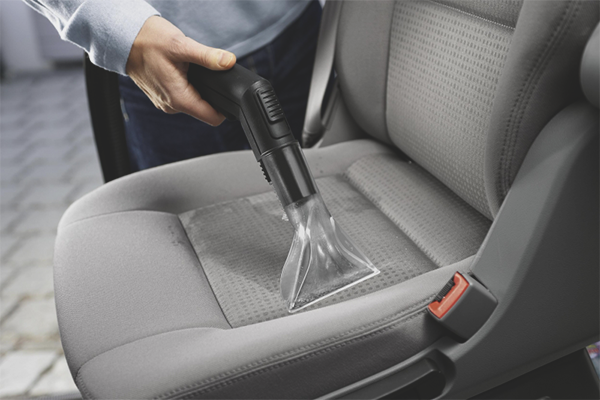
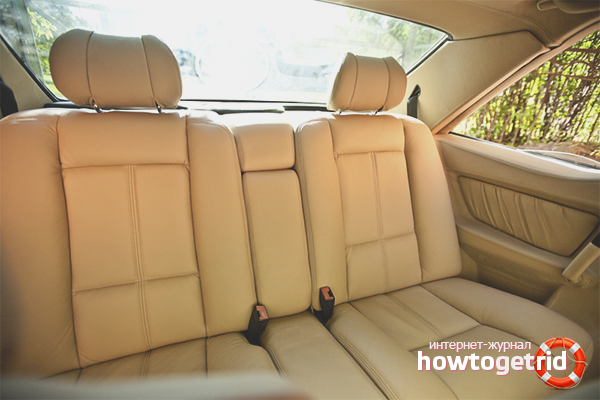


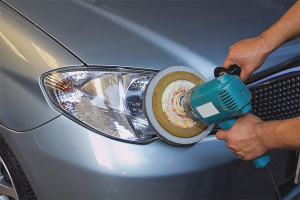

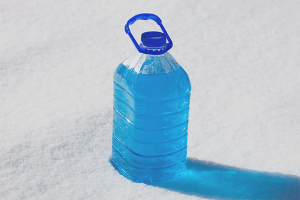
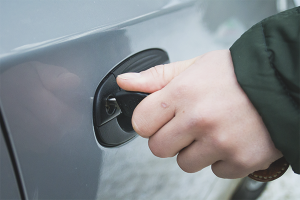



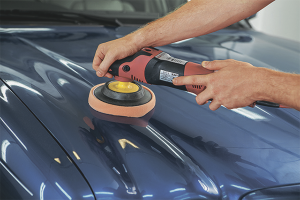
To send